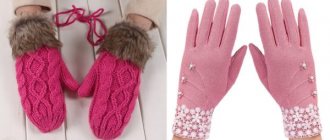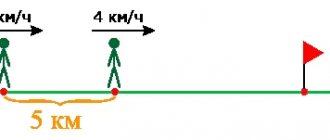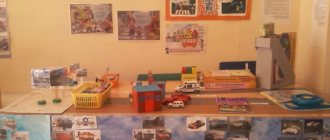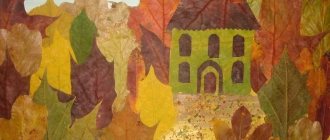Introduction
I thought for a very long time about what to choose to work on the project; I wanted something unusual, new. We recently renovated our house.
Sometimes you want to revive even a room that was recently renovated. You can perceive your home as a refuge, or simply as a place to sleep and eat, or as a space for implementing bold ideas. I decided to imagine myself as an artist...
What should a painter have? Canvas and paints! You might think so. In your opinion, is painting only oil or watercolor? So I dare to refute this opinion. What you really need is sheep's wool. Everything mysterious lies in the fact that you have to draw with wool. Have you heard about this? This interested me very much. I decided to take up this unusual painting. And make paintings for the wall to decorate the interior of the room and add a little creativity to its design.
Small stylish paintings will certainly add interesting notes to the atmosphere. It is important that the selected scenes serve as a reflection of the inner world of the residents. Especially when between them there is a whole gap the size of two generations: different views on life, unequal dreams, dissimilar tastes and interests.
The desire to diversify your interior, to give it a touch of uniqueness and mystery, style and perfection, has been inherent in man since ancient times. After all, a cozy home means joy, good mood and spiritual comfort for the whole family. Paintings give a homely feel, especially if they are made by hand. A person who turns craft into creativity knows that any thing made with one’s own hands absorbs the good energy of its creator, radiates the warmth of our hands, and carries positive energy.
During the cold season, we really miss light and bright colors. And colored wool will give you a feeling of warmth and harmony. Because we create not with a brush, but with our hands. Once you pick up a small piece of wool, so soft and warm, you will never part with it. Therefore, painting with colored wool is an excellent cure for sadness in the winter cold!
Goal of the work:
- create paintings using the wool painting technique, which will serve as decoration for the interior of the room.
Tasks necessary to achieve the goal:
— get acquainted with the concept of “painting” with wool;
— expand knowledge about the history of this technology;
- select and study literature on this type of art;
— develop and implement the project;
— manufacture a product according to the project;
- evaluate the work done.
Historical background on wool painting
Since ancient times, people have been trying to decorate their home, make it cozy and harmonious. For example, the ancient Greeks decorated the walls with drawings and bright rugs, the Romans painted the walls of houses and decorated them with mosaics. An obligatory element of a residential building in Rus' was an icon. It became a real decoration of the home, and not just an object of worship.
The corner where the icon hung was considered the most revered. Only from the 17th century, first in the decoration of the houses of noble persons, and then, gradually, among other classes, paintings began to appear on the walls. In modern times, they help make a home cozy and unique. For example, landscapes and bright paintings are suitable for the living room. For the bedroom, calming, restrained colors. Paintings depicting flowers are suitable for the kitchen; in a children's room, a drawing with a children's theme would be appropriate.
Painting with wool is a little-known and incredibly fascinating form of creativity. This so common material allows you to create true works of art. Wool is an excellent material for realizing creative ideas, namely for creating magnificent paintings. Paintings made from this material are similar to watercolors, but more textured in their composition.
Wool, animal hair (sheep, goats, camels). The bulk of wool processed in industry is sheep. Types of wool fibers: fluff (the most valuable thin, soft crimped fiber), transition hair, awn (thicker, stiffer and less crimped fiber than fluff) and “dead hair” (low strength and hard).
For many peoples, wool served as the material from which clothing was made. For example, in ancient Italy, clothes were made of wool. It was worn by all of Italy, from senator to slave.
For nomadic peoples, felt was the main type of textile that served people throughout their lives. People were born and died on felt, and covered their horses with felt blankets. Felt, according to traditional beliefs, protected from evil spirits and enemy forces.
Felt was used to make yurts. The thickness of the felt covering on the top and walls of the yurt provided warmth
Kazakh, Kyrgyz and Turkmen felt carpets made of sheep or camel wool are widely known.
Felting is the oldest type of textile. There is a legend that the first felted carpet appeared on Noah's ark. The sheep floating on it rubbed against each other, the wool fell on the deck, got wet and trampled under their hooves, and when the animals left the ark, a non-woven carpet remained on the ship.
Today, one of the oldest, traditional materials is once again gaining relevance. A half-forgotten folk craft is being revived in the fashion industry. Wool painting is a special way of creating a painting without the use of brushes, paints, pencils or water, by laying out colored sheep's wool in layers. The finished painting will be pressed against the glass. The beauty of Nature is endless, just as the creative flow in the human heart is endless.
Wool of various colors and shades is laid out on the fabric, layer by layer. And although these colors do not mix with each other like paints, a rich palette can be obtained by layering them on top of each other. It's like layer-by-layer painting... Painting with wool! Paintings made from wool are very reminiscent of watercolors, but they are not afraid of temperature changes, bright lighting and humidity. They look good in any interior and are ideal for home decoration.
The beauty of wool painting also lies in the fact that in order to master it, it is absolutely not necessary to be able to draw. All mistakes are easy to correct; you just need to remove the unsuccessful “smear” and try to lay out the wool again. Wool products are unique and original. They forever retain the warmth of hands and convey the feelings and mood of the author.
Modern designers also willingly use decorative paintings to enliven the interiors of residential premises and offices, public buildings and public places. Depending on the chosen style, image and material, the painting will fit perfectly into any interior - from strict classicism and luxurious empire style, to modern avant-garde and minimalist high-tech. A painting can be a decorative wall composition intended to convey certain semantic information or simply to decorate the interior. The produced images will decorate any room, giving it brightness and character.
By decorating one of the walls in the room with a composition of such paintings, you can not only change the style of the interior, but also add a touch of your own character and imagination to it. But the main thing is that no matter what image it conveys, the interior of the room in which it will be placed will become unique
Children about professions - tailor
Children about professions - “Tailor”
In order to sew clothes, a tailor needs:
- patterns
- scissors
- centimeter (to measure person and fabric)
- pins
- needles, thread and thimble
- sewing machine
- iron.
Many beautiful and useful little things are used for sewing - ribbons, braid, lace, buttons, hooks, buttons, zippers. All this is called fittings.
Things to sew
They sew clothes from a variety of fabrics:
- from flax (grass with blue flowers)
- made of cotton (there is a cotton “cloud” on its stem)
- made of silk (threads are made by silkworm caterpillars, weaving their own house)
- from sheep and goat wool
- from oil, coal, metal and fir cones.
When Olesya found out that silk is made from the cocoons of silkworms, she was very upset that people were destroying the houses of little caterpillars.
And I was surprised that such inappropriate materials as oil, coal, metal and fir cones are used for clothing. I've never heard of this.
Various fabrics for sewing
The book clearly shows how tailors sew clothes in the studio and in the factory.
How to sew clothes
From a historical excursion: the first clothes were made from animal skins, then they learned how to make fabrics and simply wrapped them around the body. Then wandering tailors appeared who sewed clothes, moving from city to city. And now clothes are sewn in factories and ateliers. And the most skilled craftsmen are called couturiers.
The book shows the traditional clothing of people from different countries.
Clothes in different countries
At the end of the book “The Tailor” there are tips for children on how to take care of their clothes.
Handle things carefully! Hang your clothes in the locker.
If clothes get dirty, they need to be washed and ironed. And if the clothes are torn, they need to be mended.
At the end of the book there are tasks for attention: to find differences in children’s clothes and to unravel the artist’s mistakes when dressing fairy-tale characters.
And, of course, you need to come up with and draw your own outfit.
Assignments on the topic “Tailor”
After reading this book, Olesya immediately wanted to sew clothes for dolls and for herself.
Bank of ideas and suggestions
| Product 1. Coffee paintings. Not only will they perfectly decorate the room, but also fill it with an amazing coffee aroma |
| Product 2. Oil paintings. Great decoration for room interior |
| Product3. Pictures from shells. Perfectly decorate and allow you to remember pleasant days |
| Product 4. Pictures made of wool. An original and unique decoration will organically fit into the interior, reminiscent of watercolors |
Selection and development of the optimal option
I have defined the criteria that my work must meet.
Criteria:
- Aesthetic appearance;
2. Complexity of manufacturing;
3. Time spent on manufacturing the product;
4. Availability of necessary materials and tools.
5. Suitable for room interior.
| Criteria / Products | 1 | 2 | 3 | 4 |
| + | + | + | + |
| + | — | + | + |
| 3. Time spent on production | — | — | + | + |
| 4. Availability of material and tools | — | + | — | + |
| 5. Suitable for interior | + | + | — | + |
| Total: | 3 | 3 | 3 | 5 |
So, after looking at several options for products from the idea bank, I came to the conclusion that coffee paintings will not only perfectly decorate the room, but also fill it with an amazing coffee aroma. But such paintings require a lot of time and sufficient costs for coffee beans. Oil paintings will perfectly complement the interior. But the execution of such a painting requires great care, knowledge of the properties of oil paints, and consideration of changes occurring in the paints.
Pictures made from shells will perfectly decorate and allow you to remember the pleasant days spent at sea in the summer. But I haven’t been to the sea for a long time and I didn’t have any shells. Pictures made of wool. An original and unique decoration will organically fit into the interior, reminiscent of watercolors.
I chose wool painting. The techniques for doing this work are not complicated, just for beginners. An interesting composition will go well with wallpaper. I think that I will spend minimal time on completing the work. After all, I’ll quickly want to see what I get in finished form.
“The best fat for soap is human”
© www.nerdreactor.com
Many of you probably remember the famous work of Chuck Palahniuk “Fight Club”, based on which David Fincher made the film of the same name. Among other things, the main character of the book was engaged in the production of soap from human fat, which he stole from the landfills of liposuction clinics.
Surely it was “Fight Club” that prompted Oresta de la Paz, an artist from Miami, to create soap from his own fat. Some time ago, the artist went through a liposuction procedure and he had the idea to use the pumped out fat in one of his art projects and he came up with (or rather spied on Palahniuk) a way to immortalize, in the words of Tyler Durden, “his fat ass.” Oresta de la Paz made several bars of soap, capturing the entire technological process on a video camera. Currently, his works are exhibited at the Frost Museum in Miami, and among the visitors there are many who want to wash their hands with unusual art objects.
Technological map for making a painting from wool
| No. | Sequence of work | Tools, devices |
| 1 | I take the subframe out of the frame. | frame |
| 2 | I cut out a rectangle from fabric equal to the stretcher | scissors, ruler, fabric |
| 3 | Gluing the fabric to the front side of the frame | glue |
| 4 | Gluing non-woven fabric onto fabric | glue |
| 5 | I'm making a sketch | paper, pencil |
| 6 | I pull out the wool in even strands | wool |
| 7 | I spread a thin layer of white wool over the entire canvas. | White wool |
| 8 | I take out strips of wool of a different color from a skein, forming a background | wool of different colors |
| 9 | I'm creating a plot | wool of different colors |
| 10 | I cover the finished painting with glass. | glass |
The effect of watercolor painting is achieved by layering different shades of wool onto the fabric. When the background is laid out, you can start laying out the drawing. Glass needs to be applied to the painting very often. This way you can detect flaws in your work in a timely manner and quickly correct them. After all, the end result is a picture under glass, therefore, when working with wool, you need to focus on the image under the glass.
Glass serves as a kind of indicator. By applying it to the layers that have already been laid out, you can see how well these layers of wool lie (you can see, for example, that the layer is not dense enough and does not cover the working surface well) or see how small details look under glass (usually with and without glass everything looks different). The wool is voluminous, when you press it with glass, the details of the picture “flatten” and thereby increase in size. It often happens that you put a thin stem, but when you apply the glass, you realize that it turned out to be too big for this flower and you have to make it smaller.
Ecological justification for paintings made of wool
In the process of performing creative work, environmentally friendly materials that do not contain harmful chemicals were used. The product manufacturing process is also environmentally friendly and does not affect human health.
The more economically material resources are used, the less it will be necessary to extract natural raw materials and, accordingly, the less destruction of the natural environment. Virtually waste-free production, no emissions into soil or water bodies.
To make a wool product, I used environmentally friendly materials - wool fibers are made from natural animal skin, do not emit harmful substances, and do not cause allergies. When dyeing wool, stable dyes are used that do not have a harmful effect on human skin during the manufacturing process.
At the end of its service life, the product undergoes biochemical processes naturally or is easily disposed of through natural processes of smoldering or burning; the product does not pollute the environment. The frame is made of natural wood. I have made an environmentally friendly product, and therefore there is no danger to human health in using the product.
"Beach Animals" by Theo Jansen
Theo Jansen / © www.artfutura.org
Humanity has long learned to use wind for its own purposes - for example, wind power plants, of which more and more appear in the world every year, allow the generation of cheap electricity, while they are easy to maintain, and malfunctions in their operation much safer for the environment than, say, a nuclear power plant accident.
© www.thisiscolossal.com
For Dutchman Theo Jansen, the wind serves as a source of inspiration when creating unusual kinetic sculptures, which he himself calls “Strandbeest”. His creations are able to move without human intervention, using only the power of the wind. To create his works of engineering sculptural art, Theo uses cheap materials that can be found in any trash can.
The “Beasts” created by Jansen are based on complex structures made of plastic pipes, bottles and peculiar sails. When the wind inflates the sails, they set in motion special pumps that fill the bottles with compressed air. As the bottles overflow, they release excess air, causing the entire sculpture to move, creating the impression that the “Beach Beast” is coming to life.
Economic justification for paintings made of wool
Saving is a system of measures aimed at ensuring careful use of raw materials, materials and time. The rational use of natural resources is one of the most complex and pressing problems of our time.
Therefore, the more materials each of us saves, the less it will be necessary to extract natural raw materials and, accordingly, destroy the natural environment.
| price for 1 unit | quantity | price | cost per painting | |
| Frame | 1 PC | 1 PC | 150rub | 1 frame -150 rub. |
| Wool | 50 g - 150 rub. | 300 g different color | 900 rub. | 60g (all colors) - ͌ 132 RUR |
| Glue | 35rub | 1 PC | 35rub | 1/3 part ͌ 11 rub. |
| Nonwoven | Are available | 1.5m*50cm | — | 30*21 cm |
| White fabric | Are available | 40*30 cm | — | 30*21 cm |
| Total | 1085rub | 293 RUR |
Thus, the wool that I have is enough for about 5 paintings. The total cost for 1 painting is 293 rubles. And compared to paintings that are sold in stores, their price is about 800 rubles and more. My work is practically waste-free production, since the leftover wool and trimmings can be used for other products using this technique.
Thus, the costs of making my product are not significant; I only take into account the time spent and my labor.
Automatic cesspool by Vim Delvoye
© blogontoast.wordpress.com
Belgian Wim Delvoye is one of the most scandalous artists of our time, as in all his works he strives to combine beauty with something disgusting and repulsive. The masterpiece with the self-explanatory title “Cloaca” is one of his most famous works and is nothing more than a feces production apparatus. The machine, incredibly complex in design, can be called a working model of the digestive tract - food loaded into it through a variety of chemical and physical processes turns into you-know-what. The “cloaca” consists of various components, including reservoirs with acid and bacteria, pumps, a computer-controlled reactor and a whole bunch of other ingenious devices - all together this allows you to simulate the functioning of the human digestive system.
The art object is installed at the Museum of Modern Art in New York, and the artist regularly organizes public demonstrations of its capabilities. Delvoye finely chops various food products and puts the food into the “mouth” of the machine, then pours some drink into it (say, Belgian beer), and then all that remains is to wait until the food is “digested” - this process takes about 22 hours. The final chord of the technological process is defecation, and the excrement released by Cloaca is no different from human feces obtained in a more “traditional way” either in color, shape, or smell.
Work quality assessment
I think my work was a success. I “paint” with wool—the warmest and most rewarding material. Not only does it literally warm, but things made from it carry all the warmth of the hands and the kindness invested. Thanks to the special properties of wool fiber, wool paintings are very rich, bright and “warm”.
I had the opportunity through tactile sensations to improve fine motor skills of my hands, which has a beneficial effect on development. Also, painting with wool is an excellent color therapy, because my work uses mainly bright colors that children love so much. In addition, paintings made from natural wool have interesting properties: they relax, soothe, and pacify. It’s not for nothing that they are called “Warm Pictures” - they make your soul feel warmer.
Many people note the relaxing properties of wool paintings, and they fit into almost any interior. I would call such a painting “Point of Return”, a return to your spiritual world, to warmth and tranquility, to your inner self. Paintings made from wool are quite easy to correct. You can “rewind” the process, since I work with wool and lay it out in layers; you just need to remove part of the layer or remove those parts that didn’t work out.
In the process of work I learned:
- select the desired color scheme;
- do the work carefully.
I developed my aesthetic taste and acquired the skill of designing a project. During the preparation of documentation for a creative project, I improved my skills in working on a personal computer.
I also believe that it is possible to continue the theme of the project in the future. You can make a whole collection of paintings. The work does not require expensive materials, is simple to perform and original. While doing this work, my circle of knowledge, abilities, and skills in painting with wool expanded... This technique not only performs the function of decoration, but also carries a certain set of tasks:
- develops color perception, the concept of cold and warm tones;
— teaches you to choose a color for the background;
- develops abstract thinking;
- develops the muscles of the hand and the eye;
— fosters perseverance, patience, attentiveness, diligence;
— introduces a new type of artistic activity.
With a little attention and patience, I achieved the desired result. The resulting work is inexpensive and beautiful. I believe that I completed the task set for myself. I hope that others will like my work. The result completely met my expectations. In my opinion, the picture turned out to be harmonious, beautiful, and original.





